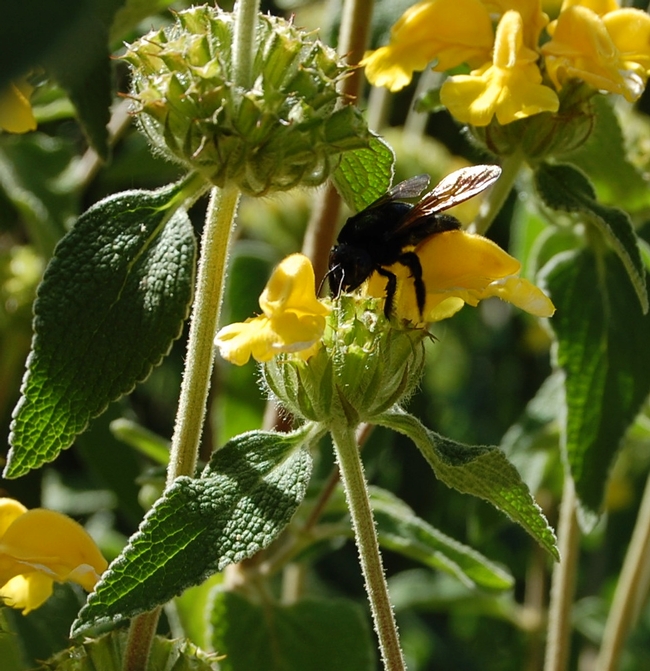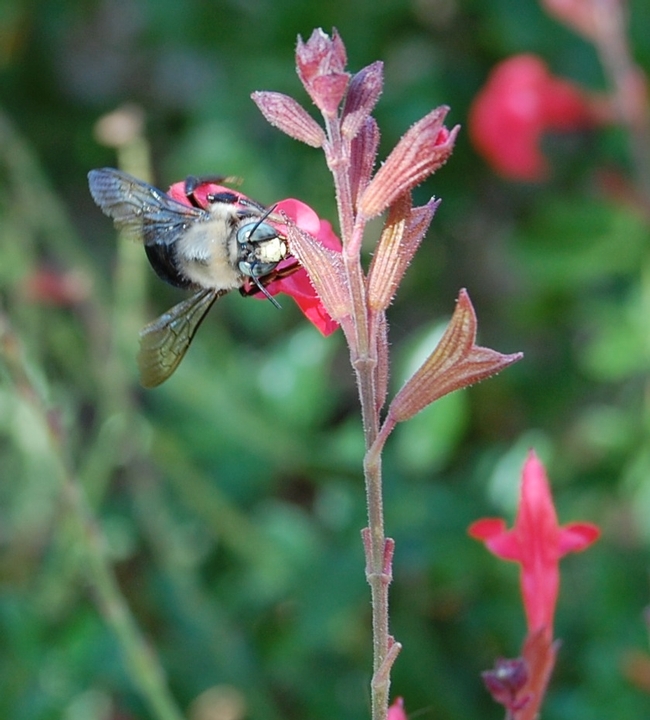Valuable Pollinators
I was lucky enough to attend the recent “Pollinator Gardening” workshop hosted by the California Center for Urban Horticulture at UC Davis. Part of CCUH’s Your Sustainable Backyard series, the day devoted to pollinators was fascinating. I learned a lot, which was the point:
- Bees are basically wasps that have changed their diets. Wasps = carnivores. Bees = vegans. Nectar is their flight fuel, and they use plant protein (pollen) to feed their young.
- Boy bees do not sting.
- Not all bees are social, like European honey bees. Many native bees are solitary, nesting in soil or fallen trees. Very few bees make honey.
- There are 20,000 species of bees, on a world scale. This is more diversity than all mammals and birds combined.
- In North America there are 4,000 species of bees.
- In California there are 1,600 species of bees.
- In Yolo County, there are 1,300 species of bees.
- The value of pollination is $220 billion a year in the U.S. European honey bees’ pollination value is $14.6 billion a year. Wild bees? $13 billion a year.
So, I got it! Wild bees are quite helpful pollinators after all. But they are under threat from habitat loss, the intensification of agriculture, new and persistent diseases, and pesticides. It was made plain during the workshop that we, as urban gardeners, should to do our part to provide bee-friendly areas in our yards. How do we do that?
We were told that bees need habitat, not just flowers. They need bare soil, so don’t use too much mulch. They also need sun, plenty of water, rocks and a diverse selection of pollinator plants (native plants work best). You can even make your own bee houses out of reed cane bundles. If you build it, they just may come. (To see a bee-friendly garden, head to UC Davis’ Haagen-Dazs Honey Bee Haven.)
For more information, visit http://www.pollinator.org, www.xerces.org/pollinators-california-region, or www.helpthehoneybees.com.

A female Valley carpenter bee (Xylocopata varipuncta) forages for nectar in a Jerusalem sage (Phlomis fruticosa) bloom. (photos by Kathy Thomas Rico)

A male carpenter bee (Xylocopata tabaniformis orpifex) visits a Salvia blossom in a Vacaville garden.


I invite you and your readers to visit www.FeedTheBees.org for ideas and information on our campaign to encourage individuals, businesses, organizations and governments to support a healthy and sustainable bee population; plant gardens to feed pollinators and encourage biodiversity; and register their gardens and farms online.
Our eight-page Bee-Friendly Plant List for Gardens and Farms may also be of interest. It's a free download at http://www.feedthebees.org/bee-plant-list-for-gardens-and-farms
Thanks again,
Ian
Posted by Ian Tait on May 30, 2012 at 1:39 PM